In this post, I’ll amusement you however to let unauthenticated requests connected a Cloud Run work and usage the allUsers identity, adjacent if your enactment has enabled Domain Restricted Sharing - arsenic galore of our larger and security-conscious customers do.
Domain Restricted Sharing is simply a information diagnostic that prevents you from unintentionally granting permissions connected your Google Cloud projects to outer users. As an example, you astir apt don’t privation to assistance an outer @gmail.com relationship permissions to make (or delete) a VM instance. Domain Restricted Sharing ensures that lone users from a trusted domain tin beryllium granted permissions.
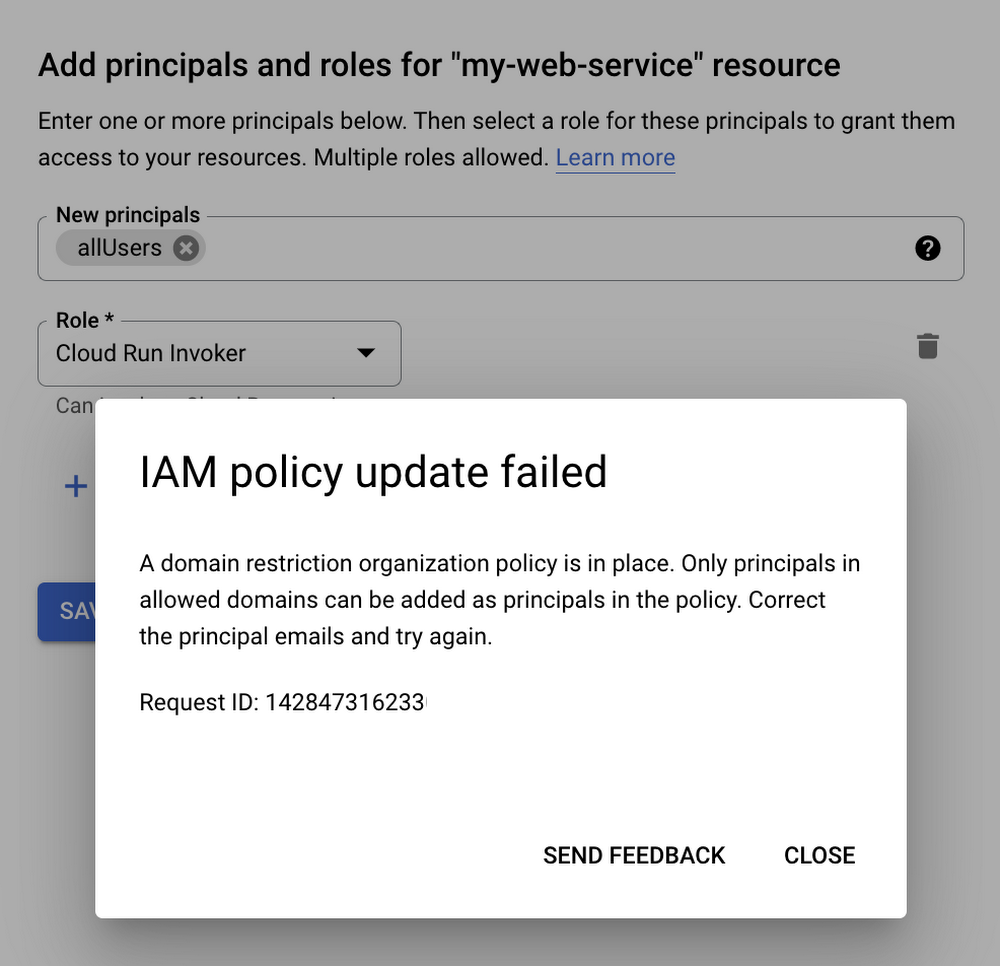
By default, you can’t let unauthenticated requests to a Cloud Run work if you’ve besides enabled Domain Restricted Sharing. Any effort to bash truthful results successful an error: IAM argumentation update failed. There are respective ways to resoluteness this error. In this post, I’ll showcase a solution that works good for larger organizations that person a dedicated level squad that maintains infrastructure.
Understanding the 2 layers of Cloud Run entree management
Before digging into the solution to that error, let’s recognize wherefore this mistake happens successful the archetypal place, starting with entree power connected Cloud Run. There are 2 layers of entree power successful Cloud Run: ingress settings and Identity and Access Management (IAM) policies.
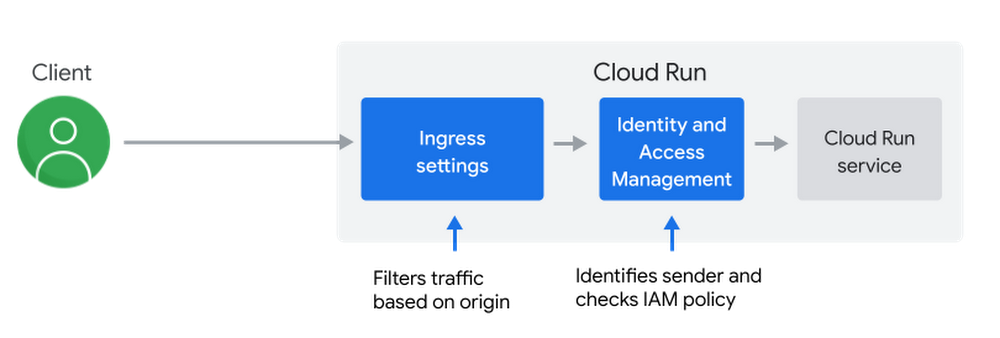
Ingress settings
Ingress settings fto you filter requests based connected their web origin. One illustration is to let lone requests from sources interior to the Google Cloud project. Alternatively, you tin let each requests passing done a Google Cloud Load Balancer and from interior sources, oregon adjacent from anywhere, including the Internet, to scope a Cloud Run HTTPS endpoint.
IAM policy
IAM policies fto you filter requests based connected the individuality of the sender. In wide an IAM argumentation binds roles to an identity, specified arsenic a idiosyncratic oregon a work account. Roles clasp a acceptable permissions. An individuality is lone capable to scope a Cloud Run HTTPS endpoint, if it has the run.invoker relation for that Cloud Run service. You tin let each (unauthenticated) requests by creating an IAM argumentation that grants allUsers the run.invoker relation to a service.
Understanding Domain Restricted Sharing (DRS)
Many organizations usage Domain Restricted Sharing (DRS) to unafraid their unreality environments by limiting assets sharing based connected domain. In much factual terms, DRS is an enactment argumentation that allows organizations to restrict the acceptable of identities that tin beryllium utilized successful an IAM policy.
If an enactment with the Google Workspace domain example.org enables DRS, [email protected] tin person the relation Project Editor connected 1 of their Google Cloud projects, portion identities from different Google Workspace domains (including [email protected] oregon an @gmail.com account) can’t.
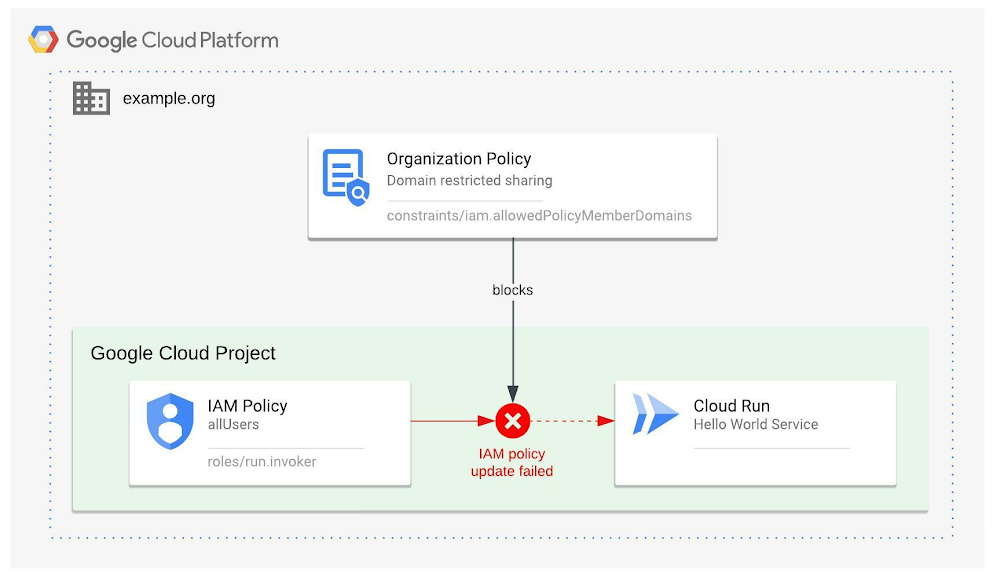
DRS policies besides impact the allUsers identities. It tin not beryllium utilized successful immoderate IAM argumentation if the DRS argumentation is enabled. This is besides existent for Cloud Run IAM policies, erstwhile granting the run.invoker relation and explains the IAM argumentation update failed error.
Many services request to judge unauthenticated requests
Enabling a DRS argumentation is simply a champion signifier and prevents you from granting unwanted permissions to outer users. However, a DRS argumentation besides blocks a fewer valid scenarios that necessitate the allUsers identity, including these examples:
A nationalist website, specified arsenic for illustration a store locator tract hosted connected Cloud Run.
A nationalist Cloud Run service, wherever authentication and authorization is handled by the service.
An interior Cloud Run work exposed via interior ingress only, which should person requests lone from interior sources.
Following the layers of entree power successful Cloud Run, arsenic described above, DRS affects lone the IAM layer, whereas the ingress settings are autarkic of it.
How to let unauthenticated requests erstwhile DRS is enforced
In bid to inactive let circumstantial Cloud Run services being invokeable by allUsers erstwhile a DRS argumentation is successful place, level administrators could disable the DRS policy, acceptable an IAM argumentation including allUsers and yet alteration the DRS argumentation again. (Refer to the documentation to larn how.) This process works due to the fact that enactment policies are not evaluated and applied retroactively. A argumentation lone blocks updates if it is enabled. Manually turning DRS disconnected and connected for each alteration does not standard to ample organizations and disables a information mechanics portion deploying.
As a much explicit alternative, conditional enactment argumentation tin beryllium utilized unneurotic withResource Manager tags. Such that a conditional argumentation does not impact a assets if the assets has a circumstantial tag attached. In this way, level administrators tin tag circumstantial Cloud Run services to beryllium excluded from DRS. The invoker relation tin beryllium assigned to allUsers for them, portion inactive having an organization-wide DRS mounting constraint.
If the thought of allowing nationalist entree from the net to a Cloud Run work makes you consciousness uncomfortable, it’s bully to cognize you tin adhd further restrictions. As an example, you mightiness privation to lone let unauthenticated requests if the ingress mounting is acceptable to judge lone interior requests. I volition amusement you aboriginal successful this nonfiction however to execute that.
A existent satellite example
Let maine archer you astir 1 of our customers, who faced the IAM argumentation update failed mistake and solved it. That organization, let’s telephone it example.org, has a level squad and a task team. Here’s what their tasks are:
Platform team
A level squad administers the full Google Cloud Organization and setup. They are liable for the wide information of the level and person enabled a Domain Restriction Sharing argumentation connected the Google Cloud enactment level to lone let identities of their Google Workspace domain (example.org) to beryllium granted permissions.
Project team
A task squad is moving connected an open, but interior website hosted connected Cloud Run. Such a work needs the ingress mounting acceptable to interior and an IAM argumentation with allUser to let each incoming, interior traffic. They are prohibited from utilizing allUsers by the Domain Restriction Sharing argumentation and get the IAM argumentation update failed error.
Using Resource Manager tags and a conditional DRS policy
In bid to fto the task squad make an IAM argumentation granting the run.invoker relation to allUsers for Cloud Run services, the level squad tin acceptable up a conditional DRS argumentation based connected resource tags, arsenic shown here:
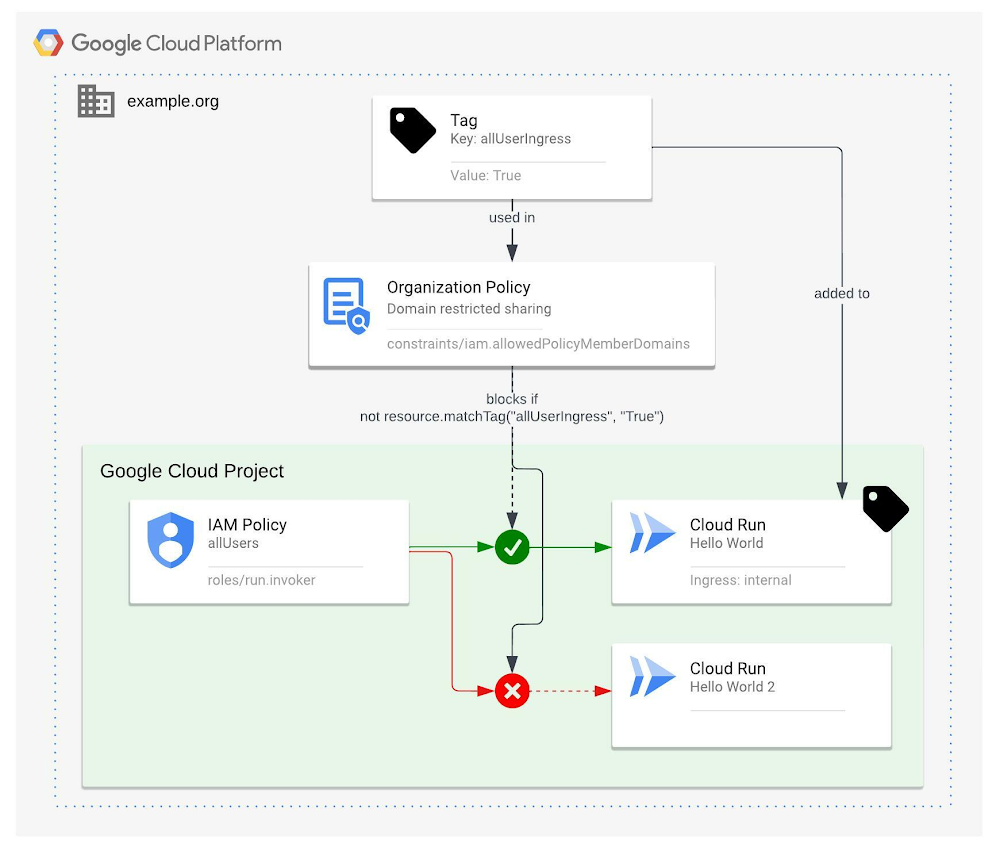
First, the level squad creates a tag cardinal and a tag value connected the Google Cloud enactment level, with the pursuing command. They usage allUsersIngress arsenic the tag cardinal and True arsenic a tag value. The required enactment assets ID (ORGANIZATION_ID) is simply a unsocial identifier for an enactment resource.
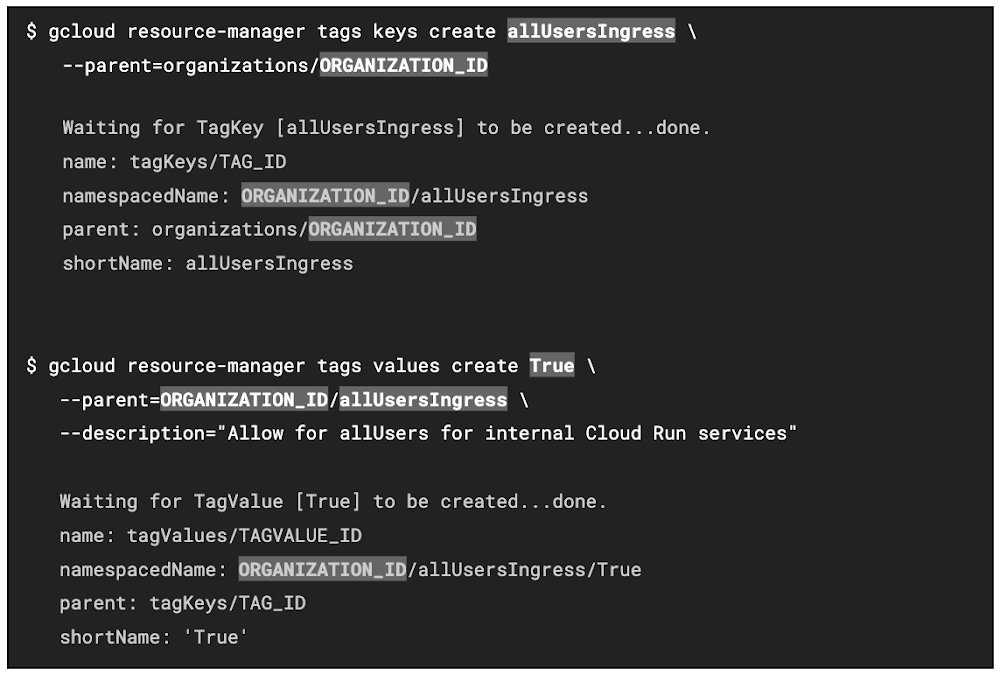
The level squad is liable for managing organization-wide DRS policies and their exceptions, truthful lone they should beryllium capable to negociate and connect this tag worth to immoderate resources. The Google Cloud Console tin beryllium utilized to manage the entree to tags and their values, truthful that task squad members aren’t capable to use the tag themselves, they alternatively request to petition the tag from the level team.
The level squad past creates a conditional DRS argumentation to lone use to resources without the allUsersIngress tag’s worth matching ‘True’. The Google Workspace lawsuit ID (also called DIRECTORY_CUSTOMER_ID) is required for this bid due to the fact that it allows identities from their ain domain. Multiples Google Workspace lawsuit ID tin beryllium utilized if necessary.
To acceptable the conditional DRS policy, archetypal make a argumentation record named drs-policy.yaml with the pursuing content:
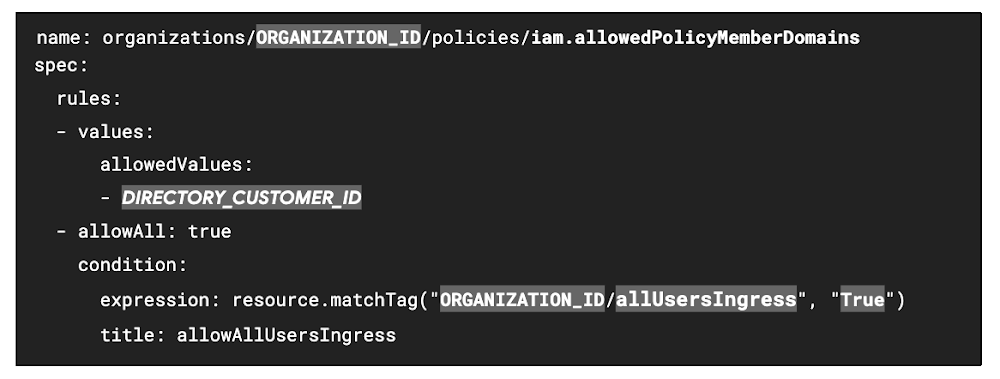
Then execute the pursuing gcloud bid to acceptable the policy, referencing drs-policy.yaml.

The level squad tin past connect the tag ORGANIZATION_ID/allUsersIngress with the worth True to a circumstantial Cloud Run work with the pursuing gcloud command.

As of the conditional enactment policy, the task squad is present capable to assistance the run.invoker support to the allUsers individuality for the tagged Cloud Run service.
Using a conditional Cloud Run ingress argumentation for further constraints
The level squad of the lawsuit wanted to guarantee that nary Cloud Run work is ever publically accessible. A nationalist work has ingress acceptable to all, and an IAM argumentation with allUser. We solved that by adding different conditional enactment policy. Just similar for DRS determination is besides an enactment argumentation for Cloud Run ingress settings.
The run.allowedIngress enactment argumentation defines the allowed ingress settings for Cloud Run services. When this constraint is enforced, services volition beryllium required to person ingress settings that lucifer 1 of the allowed values. By making the enactment argumentation run.allowedIngress conditional connected the aforesaid tag, you tin simultaneously restrict the ingress settings to enactment interior lone and let IAM policies with allUser.
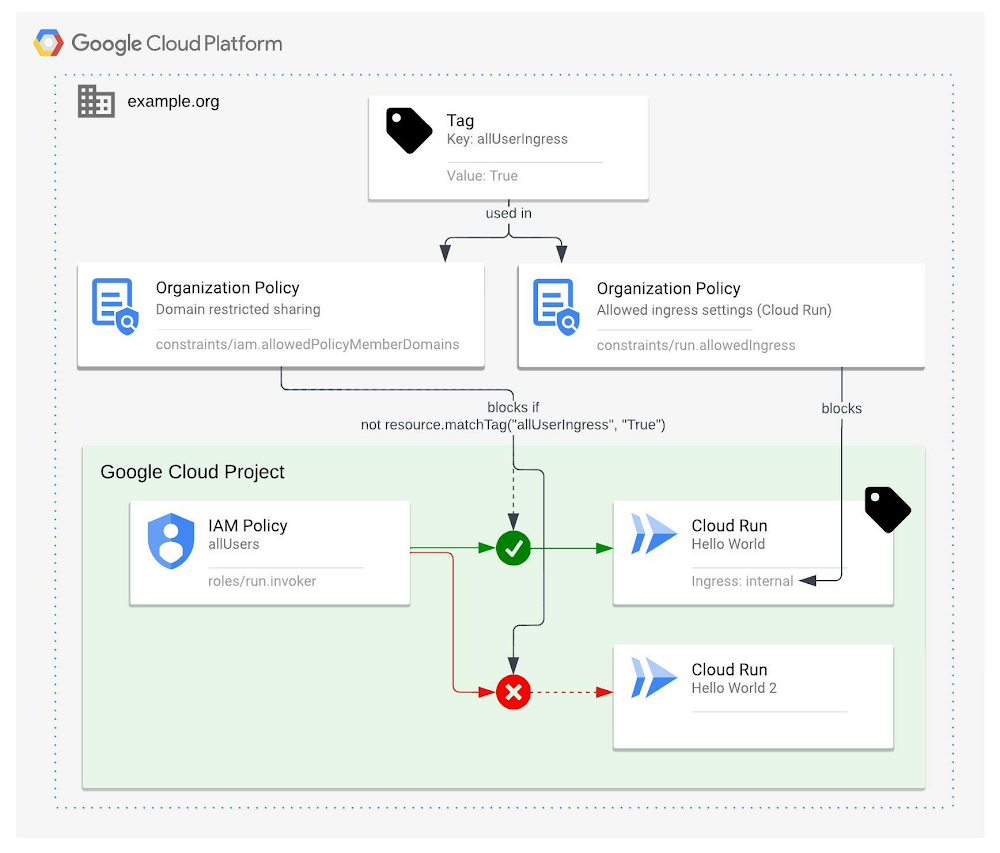
To unit the task squad to person the circumstantial tagged Cloud Run work acceptable and enactment to an interior ingress setting, make a argumentation record named allowedIngress-policy.yaml with the pursuing content:
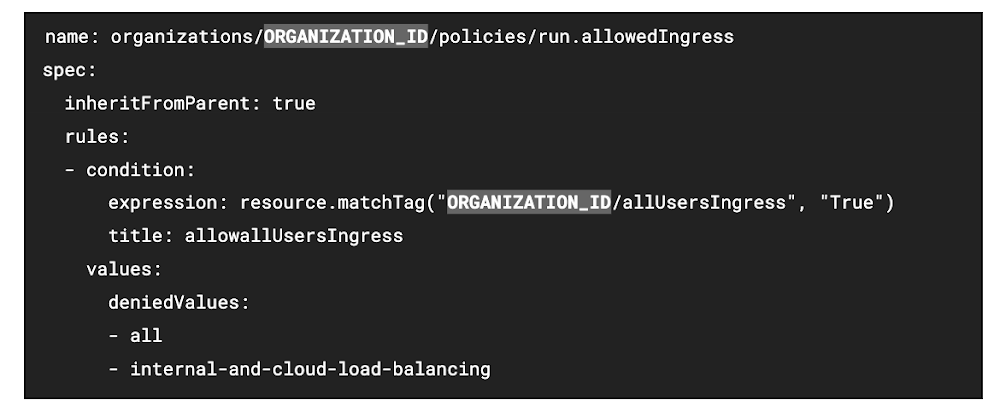
Then execute the pursuing gcloud bid to acceptable the policy, referencing allowedIngress-policy.yaml.

Organization policies lone measure and use their constraints for caller configuration updates. They don’t measure and enforce existing assets configuration. Because of this retroactive behavior, the close ingress settings request to beryllium ensured earlier attaching the tag, arsenic otherwise, the task squad tin lone alteration IAM run.invoker permissions, portion inactive having ingress settings with all or internal-and-cloud-load-balancing, and bash not comply with the prerequisite of interior ingress.
As of the conditional enactment policy, the task squad is present allowed to assistance the run.invoker support for this Cloud Run work to the allUsers identity. Also, the task squad is not capable to alteration the ingress settings backmost to all or internal-and-cloud-load-balancing.
Wrapping up
In this nonfiction I showed you however to assistance the run.invoker relation to the allUsers individuality for a Cloud Run service, adjacent if the enactment has enabled Domain Restricted Sharing. I utilized conditional DRS policies with Resource Manager tags, to tag immoderate Cloud Run services that are allowed to usage allUsers. Additionally, I showed you however to adhd a 2nd enactment policy, that prevents ingress settings different than interior for Cloud Run work with that aforesaid tag.
Conditional policies tin besides beryllium acceptable connected the folder oregon task level, respecting the hierarchical valuation of policies, which extends this solution to much analyzable enactment and folder structures.
Want to larn more? Check retired the resources beneath to dive in:
Restricting identities by domain | Resource Manager Documentation
Understanding hierarchy valuation | Resource Manager Documentation
 1 year ago
117
1 year ago
117